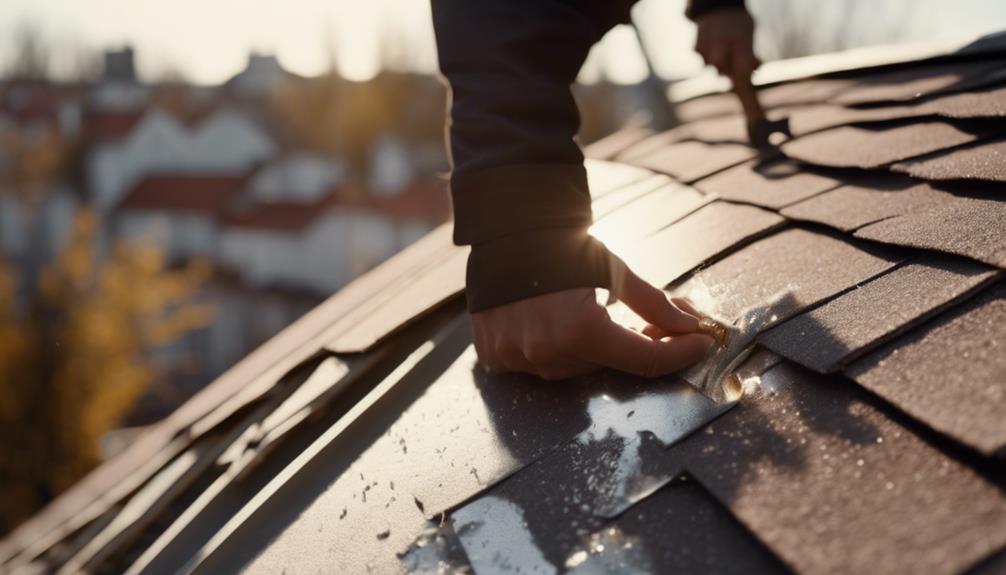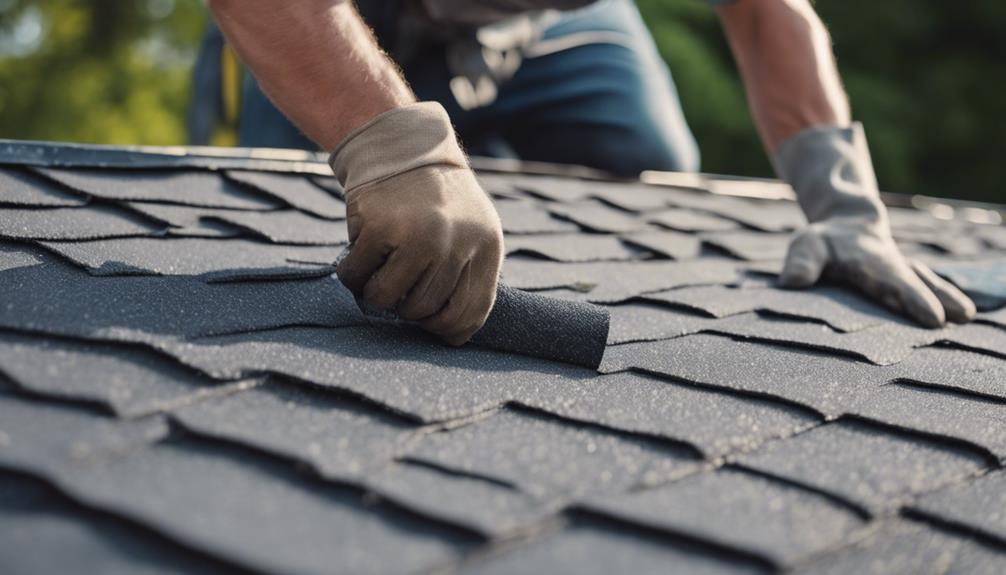How to Maintain Your Felt Roof?
Optimize the lifespan of your felt roofing with proactive maintenance strategies - discover key tips to ensure its longevity and performance.
Ensuring the longevity and performance of felt roofing requires a meticulous approach to maintenance. From routine inspections to targeted cleaning methods, various strategies can help safeguard your roofing investment.
However, one often overlooked aspect is the significance of proactive measures to prevent potential issues. By staying ahead of maintenance needs and implementing timely repairs, property owners can mitigate larger problems down the line.
What Are the Key Benefits of Conducting Regular Inspections on Felt Roofs?
Conducting regular inspections is paramount in ensuring the longevity and functionality of a felt roofing system. By inspecting the roof frequently, potential issues can be identified and addressed promptly, preventing minor problems from escalating into more significant and costly repairs.
During these inspections, it is essential to examine the overall condition of the felt roofing, paying close attention to areas prone to wear and tear such as seams, edges, and flashings. Look for signs of damage, such as cracks, tears, or bubbles in the felt material, as well as any areas where water might be pooling or leaking through.
Additionally, inspecting the roof allows for the early detection of debris buildup, which can lead to drainage issues and potential water damage. Regular inspections provide an opportunity to assess the effectiveness of the roof’s drainage system and make sure that gutters and downspouts are clear and functioning correctly.
By staying vigilant and proactive through routine inspections, property owners can maintain the structural integrity of their felt roofing system and prolong its lifespan.
How Can You Effectively Clean a Felt Roof Without Damaging It?
Regular inspections of a felt roofing system may reveal the need for thorough cleaning and debris removal techniques to maintain its prime condition and prevent potential issues. Proper cleaning not only enhances the aesthetics of the roof but also extends its lifespan.
Here are some effective cleaning and debris removal techniques:
- Regular Gutter Clearing: Guarantee gutters are free from leaves, branches, and other debris to prevent water buildup that can seep under the felt and cause damage.
- Moss and Algae Removal: Use a gentle moss killer or biocide to eliminate moss and algae growth, which can degrade the felt material over time.
- Sweeping and Inspecting: Regularly sweep the roof surface to remove dirt, twigs, and other debris. Simultaneously, inspect for any signs of damage or wear that may require immediate attention.
How Can Minor Repairs Be Promptly Addressed for Felt Roof Maintenance?

Addressing minor repairs promptly is pivotal in maintaining the integrity and longevity of a felt roofing system. Even small issues like cracks or tears can quickly escalate into larger, more costly problems if left unattended. By promptly addressing minor repairs, you can prevent water leaks, mould growth, and structural damage to your property.
To help you identify and address minor repairs effectively, below is a table outlining common issues to look out for and the recommended actions to take:
| Common Issue | Recommended Action |
|---|---|
| Cracks in the felt | Apply a patch with roofing cement or sealant. |
| Tears or punctures | Clean the area, apply a patch, and seal with roofing adhesive. |
| Loose or missing nails | Secure loose nails and replace missing ones to make proper attachment. |
Regular inspections and prompt repairs are key to improving the overall health and longevity of your felt roofing system. By taking proactive measures, you can extend the lifespan of your roof and avoid more significant issues down the line.
How Can You Effectively Weatherproof a Felt Roof?
To enhance the durability and resilience of a felt roofing system, implementing weatherproofing measures and applying protective coatings is essential. Weatherproofing helps safeguard the roof from the damaging effects of external elements such as rain, snow, and UV radiation, while protective coatings serve as an additional barrier against moisture and physical wear.
Here are three vital steps to effectively weatherproof and protect a felt roof:
- Sealing Seams and Joints: Make sure all seams and joints in the felt roofing system are adequately sealed to prevent water infiltration. Use a high-quality sealant that is compatible with the roofing material to create a watertight barrier.
- Applying Reflective Coatings: Consider applying reflective coatings to the felt roof surface to reduce heat absorption and minimize thermal expansion and contraction, which can contribute to premature deterioration.
- Regular Maintenance Inspections: Schedule routine inspections to identify any signs of wear, damage, or degradation on the roof. Promptly address any issues to prevent them from escalating and compromising the roof’s integrity.
What Are the Benefits of Professional Maintenance Services for a Felt Roof?

Engage reputable roofing professionals to perform thorough maintenance services on your felt roofing system, guaranteeing peak performance and longevity. These experts have the necessary skills and experience to identify potential issues early on, preventing costly repairs in the future. By investing in professional maintenance services, you can prolong the lifespan of your felt roof and maintain its efficiency in protecting your property.
| Benefits of Professional Maintenance Services | Description | Why Important |
|---|---|---|
| Early Issue Detection | Professionals can spot and address problems before they escalate. | Prevents costly repairs. |
| Proper Drainage Inspection | Ensures that the roof’s drainage system is functioning correctly. | Prevents water damage. |
| Sealant and Coating Evaluation | Experts assess the condition of sealants and coatings. | Maintains weatherproofing. |
| Debris Removal | Clearing debris prevents blockages and water pooling. | Extends the roof’s lifespan. |
| Overall Roof Assessment | Professionals provide a comprehensive evaluation of the roof’s condition. | Helps plan for future maintenance. |
Frequently Asked Questions
Can I Walk on My Felt Roof to Inspect or Clean It, or Will That Cause Damage?
Walking on a felt roof to inspect or clean it can cause damage if not done carefully. Distribute weight evenly to prevent tearing or weakening of the material. Consider using a walkway or hiring a professional to avoid potential harm to the roof.
How Can I Prevent Moss and Algae Growth on My Felt Roof?
Preventing moss and algae growth on a felt roof involves ensuring proper ventilation, adequate sunlight exposure, and keeping the roof clean of debris. Regular inspections and treatments using specialized products can also help maintain the roof’s integrity.
What Should I Do if I Notice Water Stains on My Ceiling but Can’t Find Any Obvious Damage on the Roof Itself?
If you notice water stains on your ceiling but can’t find visible damage on the roof, it’s essential to investigate further. The issue could be hidden leaks, condensation buildup, or even a plumbing problem. Consulting a professional roofer for a thorough inspection is recommended.
Are There Any Specific Tools or Products I Should Avoid Using When Cleaning or Repairing My Felt Roof?
When cleaning or repairing a felt roof, it is advisable to avoid using abrasive tools such as wire brushes that can damage the surface. Similarly, harsh chemicals like bleach should be avoided as they can deteriorate the material.
How Often Should I Have My Felt Roof Professionally Inspected, and What Should I Expect During a Professional Maintenance Service?
Professional inspections for felt roofs are recommended annually to detect early signs of damage. During a maintenance service, expect thorough checks for leaks, wear, and tear. Professionals will assess the roof’s condition, recommend repairs, and guarantee overall longevity.
